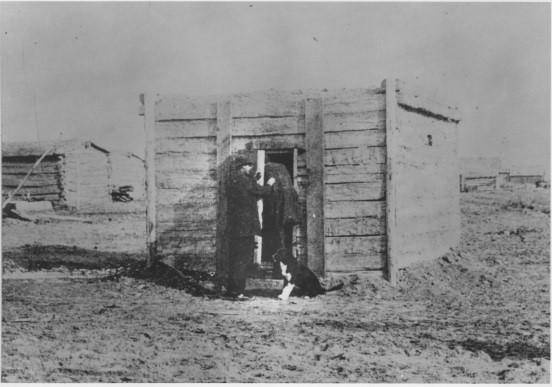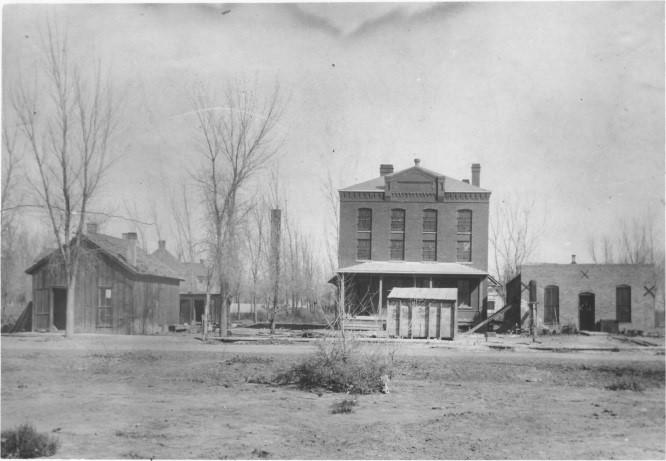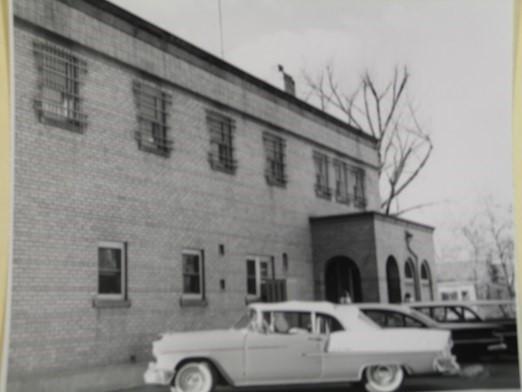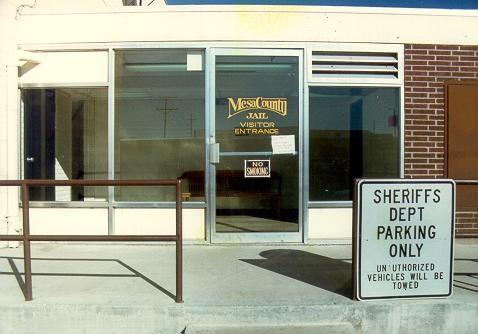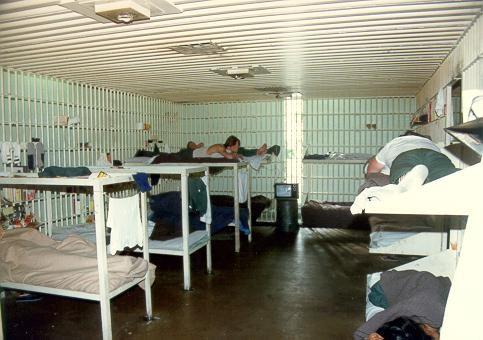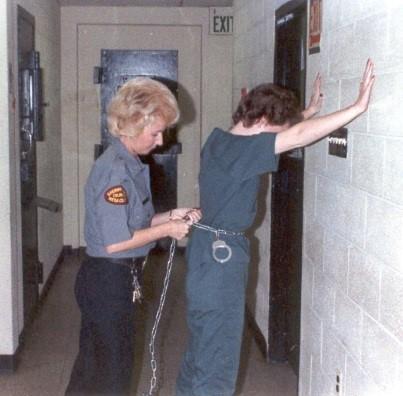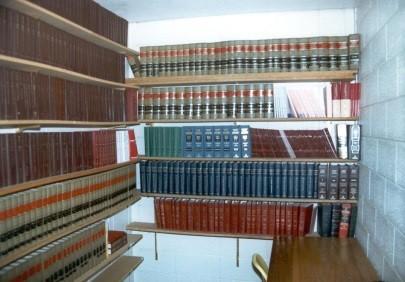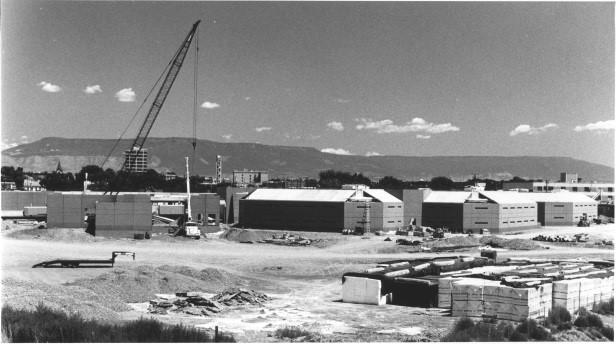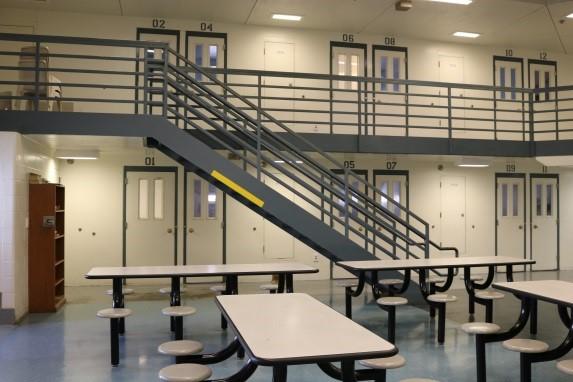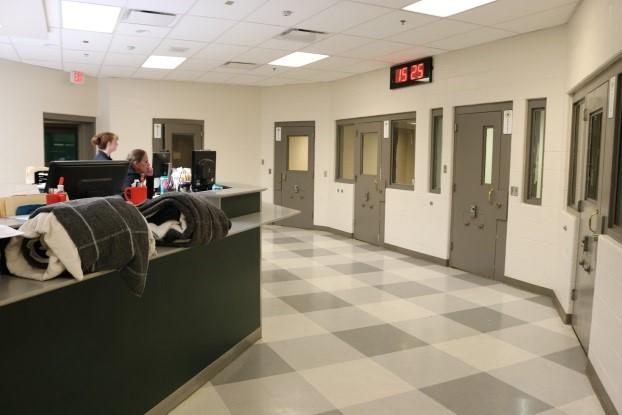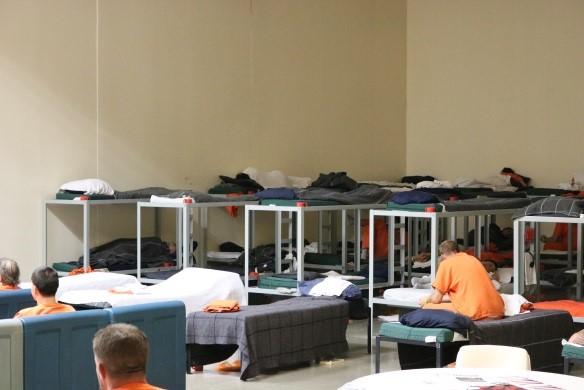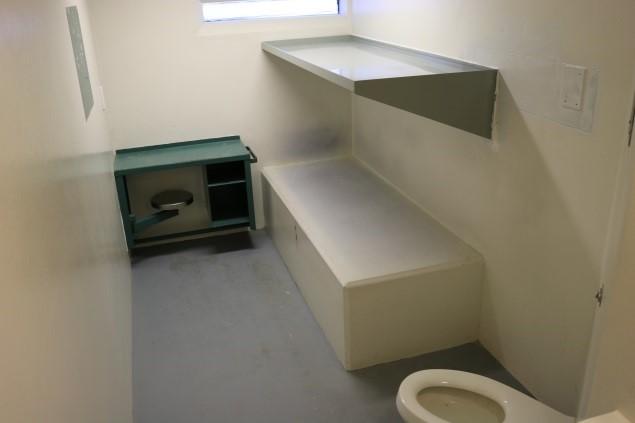Detention Facility history
The First Mesa County jail
The first jail in Mesa County dates back to 1882
The first jail in Mesa County was a city-run jail between Main Street and Colorado Avenue on the east side of 3rd Street. It was described as a one-room, hewn-log building, a very different jail than what stands today.
The Mesa County Sheriff's Office was founded in 1883
- The first Mesa County Jail was constructed on White Avenue between 7th and 8th Streets.
- The original bars of one of the jail cells can still be seen in the lobby of the current-day Mesa County Detention Facility.
Deadly escape
On April 1, 1906, a man named George McGarvey was housed in the jail on charges of attempting to criminally assault a nine-year-old girl.
On September 26, 1906, McGarvey hit Sheriff’s Deputy Edward Innes with a piece of wood and escaped.
Twenty-eight-year-old Deputy Innes passed away the following day, becoming the first Mesa County Sheriff's Office Deputy to die in the line of duty.
McGarvey was captured, tried, and sentenced to death by hanging on October 5, 1906.
Visit the Wall of Honor page to learn more about Deputy Edward Innes’ story.
Modernizing
Over the years, several jails have been built, each adding technological advances and expanding capacity to fit the needs of the Sheriff’s Office and area law enforcement.
1920s-1960s
- The County jail was located on White Avenue behind what is now known as the Old Mesa County Courthouse.
- Back then, it served as the center of the County’s justice system.
- Today, the building is home to the administration of Mesa County’s government.
1962
- The jail was constructed at 655 Ute Avenue.
- It cost $325,000 to build.
- The facility consisted of two floors and a basement.
- The jail held 86 inmates.
- It also housed the Grand Junction Police Department.
Booking process in 1962
All inmates were booked into the jail manually until the agency began using computers in 1989.
Before technological advancement, the Booking area was infamous for the typewriter with no letter “I” in the reports.
Female jailers were not hired until 1979
- Before 1979, women worked up front in the Records division and were nicknamed “matrons.”
- When needed, these women would go back to the jail to help process female inmates.
Female Detention deputies now make up 40% of our Detention staff.
Law library
Another significant change for the jail during this period was requiring a law library to be available for inmate use.
- The original library consisted of a small room with several shelves of law books.
- The law library is now digital.
The Mesa County Detention Facility
The current Mesa County Detention Facility
- Located at 215 Rice Street in the same building as the administration offices for Mesa County Sheriff's Office
- Completed in June 1992
- Cost was an estimated $8 million
- Originally housed a 192-capacity
MCDF is a state-of-the-art direct supervision Facility that provides
- Housing
- Food service
- 24-hour medical care for inmates
Court advisements and proceedings
- First-time court advisements are conducted from inside the facility using a televised video system.
- For other court proceedings, inmates are escorted between the facility and the Mesa County Justice Center via a secure internal passageway.
The modern facility does not have traditional jail bars
In its place are over 600 automated reinforced doors.
- This allows for more inmate privacy.
- It provides better security throughout the facility.
Expansion
The Mesa County Detention Facility has expanded several times
- In 1996, two 8,000-square-foot “pods” were added to the facility
- $3.4 million cost
- Each pod originally housed 56 new beds
- Additional beds were added in the corner cells of each existing housing unit
- The total amount of beds in the facility increased to 336
2007-2008 upgrades
- 54 beds were added to the two newest housing units.
2009 upgrades
- The inmate intake area, or the Booking area, was remodeled to expand capacity
- When first arrested, inmates are housed in Booking until they are assigned housing based on their classification
- Inmates often bond out before they are housed
- Inmates needing extra supervision are also housed here
August 2016 upgrades
- The gymnasium was remodeled, becoming the dormitory-style housing unit Maple
- An additional 48 beds were added, increasing the housing capacity to 438-beds.
2017-2018 upgrades
- Bunks were added to the cells to increase bed space
2018-2019
In May 2018, the Mesa County Detention Facility began exploring the possibility of expanding the current jail. The Mesa County Sheriff's Office worked with architectural companies specializing in building and designing correctional facilities to review the Facility's current and future needs. A conceptual design was made with those needs in mind, while being good stewards of taxpayer dollars.
In January 2019, the chosen architectural companies began the process of turning the conceptual designs into shovel-ready blue prints. However, the project was put on hold indefinitely due to COVID-19 and a sustained decrease in jail population.
May 2020
Due to the reduction of the jail population from COVID-19 prevention measures and staffing and budget reductions, Maple pod was closed.
The current Mesa County Detention Facility
- 553 beds, plus the Booking area
- Male and female inmates are housed separately
- Different classifications of inmates are also separately housed
Managing an increasing population in the Detention Facility while maintaining a safe environment for inmates and staff is one of the biggest challenges currently facing the Detention Facility.
The passage of Measure 1A, the Public Safety Tax, in November of 2017 has allowed more staff to be hired in the jail.
Learn more about available programs and how to contact or visit an inmate currently in our facility.
Notice
Historical information provided by George Crawford’s Attic: Dusting Off Grand Junction, Colorado’s Past by D.A. Brockett.

